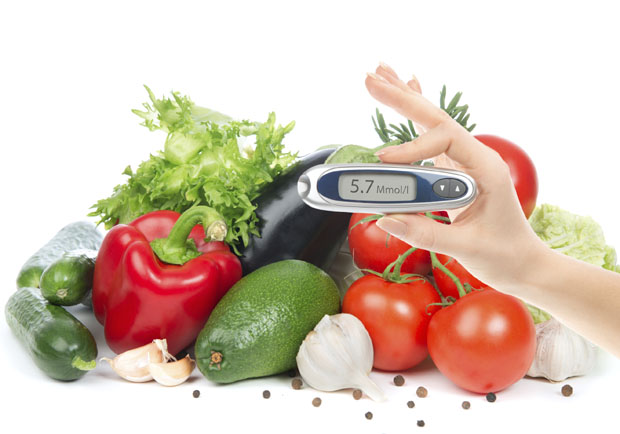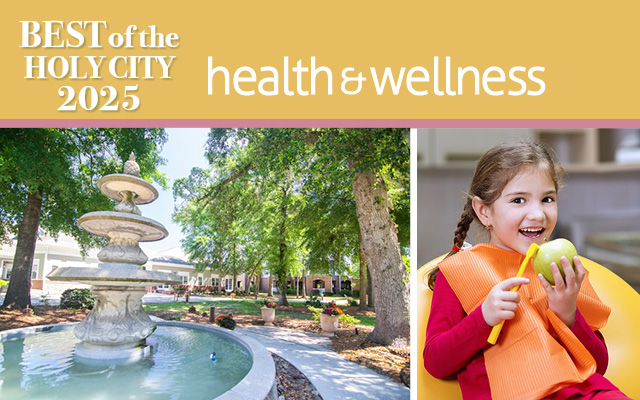Pediatric Health
04 Jul 2014
Helpful tips on staying up to date with your tots to teens
By COLLEEN TROY

The information available to expecting and new parents is copious. And while it can also be daunting, this abundance of advice means parents can easily assess up-to-date info on ages, stages, illnesses and mysteries involving their new babies.
But around the time children become verbal, they also become more complex. Parents seeking up-to-the-minute advice on raising their tots-to-teens are encouraged to find a good medical home, to keep a watchful eye on their kids, and to trust their own instincts.
Just ask pediatrician Elizabeth Milliron, mother of a toddler and five-month-old triplets. To say she marinates in all things pediatric health would be an understatement. So we ran a few “what’s a mom to do” questions by her:
CL: Parenting in the internet age is challenging. How do parents get reliable info about their children’s health?
Milliron: We understand parents’ desire to have information at their fingertips, but sadly, there is a lot of inaccurate information out there. Stick with websites authored by medical personnel, like healthychildren.org. Many practices, like ours at Coastal Pediatrics, offer educational information on their websites. And we also encourage questions by email through our patient portal. Good information should not be hard to come by!
CL: How important are well checks from toddler to teen years? Can you skip a year?
Milliron: Annual checks are instrumental in monitoring health, growth, development and immunizations. We can discover health problems that aren’t evident to the naked eye – like high blood pressure or high cholesterol, which more children have. Well checks also provide a chance for candid conversation between the child, the parent and the doctor.
CL: Vaccines and boosters get a lot of attention – some bad. What should parents know?
Milliron: I believe all vaccines recommended by the American Academy of Pediatricians are necessary. Vaccines prevent illnesses – many of which are life threatening – in children. And vaccines have also made many illnesses very rare in the U.S. Without universal vaccination, some illnesses are returning. Choosing not to vaccinate risks your own child’s health, and the health of those with whom they come in contact.
CL: If you had to pick one truly healthy habit for families to adopt, what would it be?
Milliron: Be active at least an hour a day! It is so important for children to have physical activity for their overall health. Being active with your children allows parents to set good examples for their children, gives opportunities for bonding, and promotes overall health. This often goes along with limiting time children spend in front of a television or other electronic device.
Here’s a second: eat together as a family. With our busy lives, it can be challenging to find time to eat together as a family. But it provides a great time to catch up and discuss family matters. Recent studies have found children in families that eat together have lower incidence of substance use, teen pregnancy, depression, lower rates of obesity and eating disorders, as well as higher grade point averages, vocabulary, and self esteem. There are not many other activities that take only about an hour a day and have so many benefits.
Go or No Go? Advice from an ER Pediatrician
“I have to admit, I really feel for parents,” says Dr. Douglas Holtzman, Trident Health's director of pediatric emergency services. “Figuring out when to go to the emergency room and when not to do so…the odds are stacked against you.”
Indeed, discerning the severity of a child’s injury – or lack thereof – can test the best instincts of a concerned parent or guardian. Gushing blood? A raging fever? Intense peevishness?
Defining “Fever”
Holtzman acknowledges that parents are often challenged by fevers. “We pediatricians tell you to bring in your infant when fever hits 100.4, but we forget to tell you that the same fever in a six month old is no big deal.”
Children grow and evolve. They run hotter than older kids and adults. As they mature, they can handle a higher fever. But by the time they hit their high teens, their adult bodies once again adjust. The result: your 8 year old can power through a 104 fever that would bring your 18 year old to his knees.
“Fever is an indication that something is going on. Parents are often puzzled when we release a kid with a high fever,” says Holtzman. “But in the end, it’s important to assess what else is going on, what’s been ruled out, and what’s likely.”
Best rule of thumb? Call your pediatrician first. If you’re convinced it’s an emergency, head that way.
Bumps, Bruises and Worse
Toddlers suffer spiral fractures. Growing kids get green-twig fractures. Head gashes bleed in obvious ways; internal injuries are hidden from view.
It’s a wonder we don’t swath our kids in bubble wrap from the toddler to teen years.
“When in doubt, bring your kid in,” says Holtzman. “We will never ridicule a parent or guardian for coming to the emergency department.”
In fact, he adds, he teaches his residents that they need to pay careful attention to parents. “We believe moms really do know best. If mom tells you there’s a problem, listen.”
“For us, a bad asthma attack may be of greater concern than an open head wound. Caregivers must be very aware of their child’s basic health needs. Problems can escalate.”
New Millennium Maladies
Holtzman cites a few new trends he sees in the ER:
A growing number of children are presenting with serious illnesses like measles and rubella. “I just told a family yesterday that there is no cure for tetanus, and their child had a cut that may have been exposed. And believe me, you don’t ever want your 20 year-old to contract chicken pox. It’s horrible. But all of these things are completely preventable.”
Holtzman also sees a rise in patients presenting with behavioral issues, including depression, aggression and attempted suicides. “It’s incredibly sad,” he says, noting that the nation’s ER pediatricians are putting together a bullying awareness program, to better train front-line medical professionals to help their young patients.
Finally, Holtzman says too many of his shifts include visits by children beset with what were formerly “adult” diseases like hypertension, diabetes and high cholesterol. “Obesity causes other serious conditions, and they land too many young people in the hospital. “
When Playing Stops Being Fun
Year-round sports and early specialization have been blamed in part for a dramatic growth in pediatric sports injuries. University of Connecticut researches recently dubbed the trend “a silent epidemic,” noting adolescents are just as susceptible to overuse and traumatic joint/extremity injuries as adults.
But, those injuries can look different than they do in older patients. And treatments for adults aren’t always appropriate for children. For example, experts must be aware of when to use metal inserts, and when to avoid them (they can stunt growth in young bones).
Dr. Benjamin “Benjie” Rodgers is a pediatric sports medicine specialist with Sweetgrass Pediatrics. He notes that in growing children, injuries to the bones, muscles, ligaments, tendons and joints are different than for adults.
He is a credentialed ImPACT consultant who works with area schools and athletes to keep them in game shape.
Parents with active children and teens are advised to look for sports-medicine specialists when facing medical problems like:
» Sprains and strains
» Dislocations
» Ligament injuries
» Minor fractures and avulsions
» Apophysitis
» Tendinitis
» Cartilage injuries
» Exercise-induced asthma
» Concussions
» Nutrition and supplement issues
» Diabetes
» Eating disorders
» Heat illness
» Unique conditions of the athlete with special needs
» Overuse injuries












